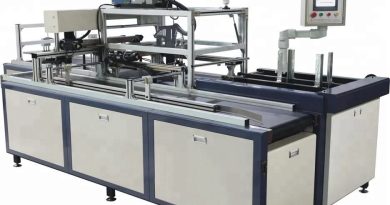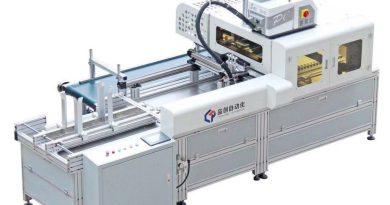Revolutionizing Packaging: The Advancements in Box Assembly Machinery
In the modern industrial era, the demand for faster, more efficient production lines continues to grow, particularly in the packaging industry. Box assembly machinery stands at the forefront of this evolution, offering innovative solutions that streamline the assembly process of boxes, enhancing both productivity and reliability. This article explores the significance of box assembly machinery, highlighting its features, benefits, and the transformative impact it has on packaging operations.
Introduction to Box Assembly Machinery
Box assembly machinery is designed to automate the process of constructing boxes from flat sheets to finished products ready for filling and shipping. These machines are crucial in industries that require robust, high-volume packaging solutions such as consumer electronics, food products, and pharmaceuticals. By automating tasks that were traditionally manual, these machines significantly reduce assembly time and increase production efficiency.
Key Features of Modern Box Assembly Machines
Modern box assembly machines are equipped with state-of-the-art features that cater to the diverse needs of the packaging industry:
- High-Speed Automation: These machines are capable of assembling hundreds, sometimes thousands, of boxes per hour, far surpassing manual assembly rates.
- Precision and Consistency: Advanced technology ensures that each box is assembled with exact precision, which is critical for maintaining product safety during transit.
- Versatility: Many machines offer the ability to handle different sizes and types of boxes, making them adaptable to various packaging needs.
- Integrated Systems: Current models often integrate with other production line machinery, creating a seamless flow from box assembly to packing and shipping.
Benefits of Box Assembly Machinery
The implementation of box assembly machinery in production lines brings numerous advantages:
- Enhanced Productivity: Automation allows for the rapid assembly of boxes, drastically cutting down production times and allowing businesses to meet high demand more efficiently.
- Reduced Labor Costs: By automating the assembly process, companies can reduce the workforce needed for manual tasks, thereby lowering operational costs.
- Improved Worker Safety: Automating the assembly process minimizes the physical strain on workers and reduces the risk of injuries associated with manual labor.
- Higher Quality Output: Automated assembly ensures each box is constructed consistently, reducing the risk of defects and ensuring higher quality packaging.
The Impact on the Packaging Industry
Box assembly machinery has made a significant impact on the packaging industry by allowing companies to scale their operations to meet increasing market demands without sacrificing quality. As online retail continues to expand, the need for reliable, efficiently assembled packaging is more critical than ever. These machines ensure that businesses can keep up with consumer expectations and logistical requirements.
Future Trends in Box Assembly Technology
Looking ahead, box assembly machinery is set to become even more sophisticated with the integration of artificial intelligence and machine learning. These technologies will enable machines to optimize assembly processes in real-time, adjust to different box specifications automatically, and predict maintenance needs to reduce downtime.
Conclusion
Box assembly machinery is transforming the packaging industry, enabling businesses to achieve higher efficiency, better quality, and increased safety. As manufacturers continue to seek innovative solutions to enhance their operations, the role of box assembly machinery will only grow more vital. Investing in this technology is not merely about improving speed; it’s about embracing the future of industrial automation.



